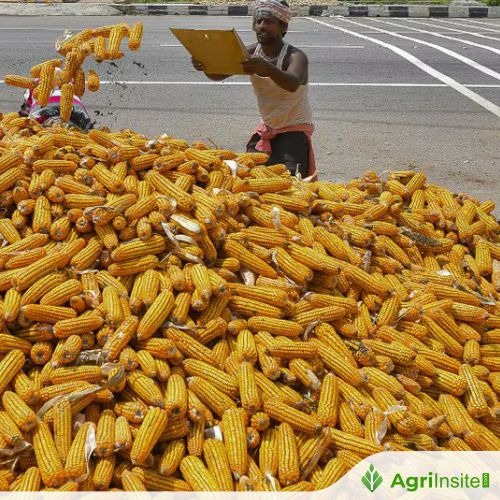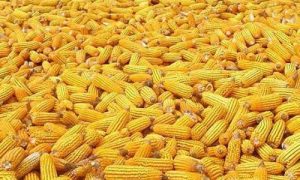Zimbabwe lifts maize import ban but imposes sourcing quota

Zimbabwe has lifted its maize import ban, with processors required to source 40% locally by April 2026, rising to 100% by 2028. The move addresses shortages while still encouraging domestic production. South Africa welcomed the policy shift, expecting increased maize exports to Zimbabwe, which may need around 700,000 tons to meet demand.
ZIMBABWE – The Zimbabwean government has officially gazetted regulations to remove the longstanding ban on maize imports, introducing transitional restrictions aimed at balancing local production incentives with market stability.
These measures, set to take effect in the second quarter of 2026, require processors to progressively increase their reliance on domestically sourced grain, oilseed, and related products.
According to the regulations, effective from April 1, 2026, all processors must procure at least 40% of their annual requirements from local suppliers. This threshold will escalate to 100% by April 1, 2028, ensuring a complete shift to Zimbabwean-sourced materials over the next few years.
Obert Jiri, Permanent Secretary for the Ministry of Lands, Agriculture, Fisheries, Water and Rural Development, emphasized that the policy adjustment does not signify a retreat from supporting domestic agriculture.
“We protect our farmers when they harvest so that they can have a market. But as time goes on, stocks for commercial use run low, and we then open up to allow millers to operate at their capacity. That’s the rationale; it doesn’t mean we don’t want to protect our farmers anymore,” Jiri stated in an interview with Farmer’s Weekly.
Deputy Minister of Industry and Commerce Raj Modi, a notable business figure who operates a chain of supermarkets in Zimbabwe, acknowledged his role in advocating for the ban’s removal. Modi attributed his efforts to observed shortages in the local market, particularly for maize.
“I can’t comment much on it because it’s not part of my ministry, but yes, I only worked on that because there were shortages of maize. So, we asked the government to lift the ban,” he explained.
South Africa welcomes scrapping of ban
The decision has been positively received in South Africa, a key regional maize exporter. Minister of Agriculture John Steenhuisen issued a statement welcoming the move as a return to prudent economic practices vital for the prosperity and stability of Southern Africa.
He highlighted the benefits for price stabilization and the significance of the Zimbabwean market for both white and yellow maize exports.
“The agriculture sector thrives on predictability and efficiency, and restrictive trade measures, while sometimes intended to protect local producers, too often lead to market distortions that ultimately harm the consumer,” Steenhuisen noted.
According to him, by allowing the free flow of maize, particularly white maize that Africa consume as a staple food, SA is sending a clear signal of confidence to its agribusinesses and exporters, encouraging the investment and expanded production that benefits all in the Southern African Development Community member states.
“It strengthens regional integration and ensures that surplus-producing nations can readily meet the needs of their neighbors,” he noted.
Wandile Sihlobo, chief economist at the Agricultural Business Chamber (Agbiz) in South Africa, provided further context, questioning the Zimbabwean government’s claims of a bumper harvest for the 2024/25 season.
The official forecast stands at 1.8 million tons, contrasting with the U.S. Department of Agriculture’s estimate of 1.3 million tons from its Pretoria office.
Sihlobo suggested that the rapid emergence of shortages following the ban’s imposition in late August indicates the actual yield may align more closely with the lower figure.
“Admittedly, the Zimbabwean government has a history of being somewhat optimistic about its harvest estimates than reality warrants. Thus, we suspect the actual harvest is perhaps close to the USDA’s figure of 1.3 million tons,” Sihlobo stated.
“Had the country harvested 1.8 million tons, it would have been hard to imagine that news of shortages of maize supplies would have been announced that fast. The millers would have relied on the domestic supplies for some time and perhaps started running out of the local supplies at the end of the year and in the first quarter of 2026.”
Given Zimbabwe’s annual maize consumption of approximately 2 million tons, Sihlobo projected a potential import need of around 700,000 tons.
He identified South Africa and Zambia as primary suppliers, noting that the policy shift could alleviate domestic food price inflation by enabling access to competitively priced global supplies.
Sihlobo also pointed to South African export data, revealing that 65,090 tons of maize were shipped to Zimbabwe from September 2025 onward, during the period the ban was ostensibly in place, raising inquiries about whether the restriction was effectively enforced or if the recent announcement formalized an existing practice.
For South Africa, this development supports regional demand and domestic prices, which have recently declined.
As of now, South Africa’s 2025/26 marketing year maize exports total 729,690 tons, well below the projected 2.2 million tons, with Zimbabwe accounting for 18% of the volume.
The remainder is distributed across Southern Africa and international markets including Venezuela, Sri Lanka, Taiwan, and Vietnam. Sihlobo anticipates an increase in Zimbabwe’s share, particularly for white maize intended for human consumption, reinforcing its traditional role in South African exports.
To Read more about Maize News continue reading Agriinsite.com
Source : Milling MEA















